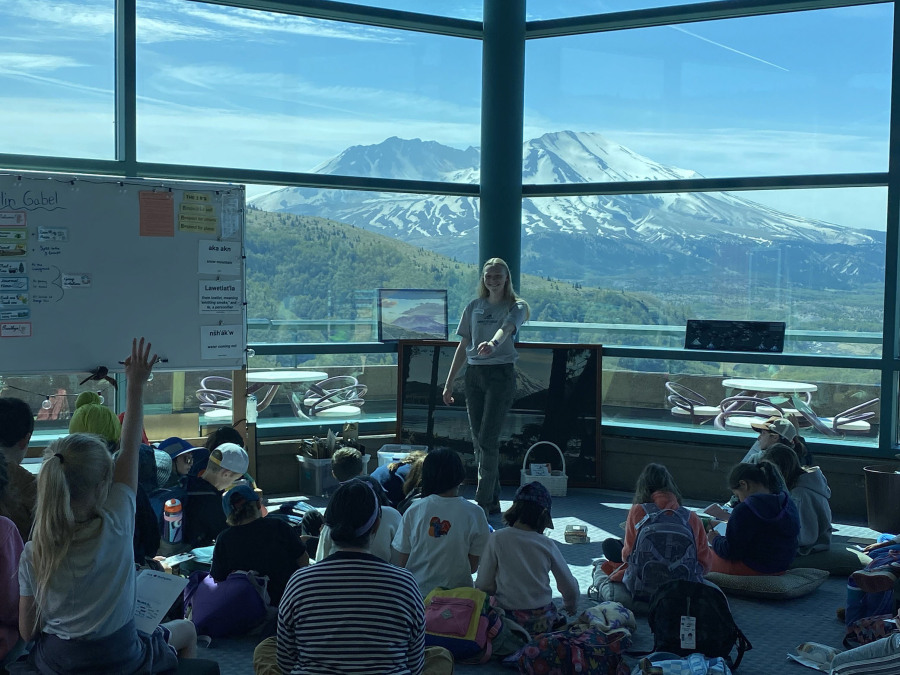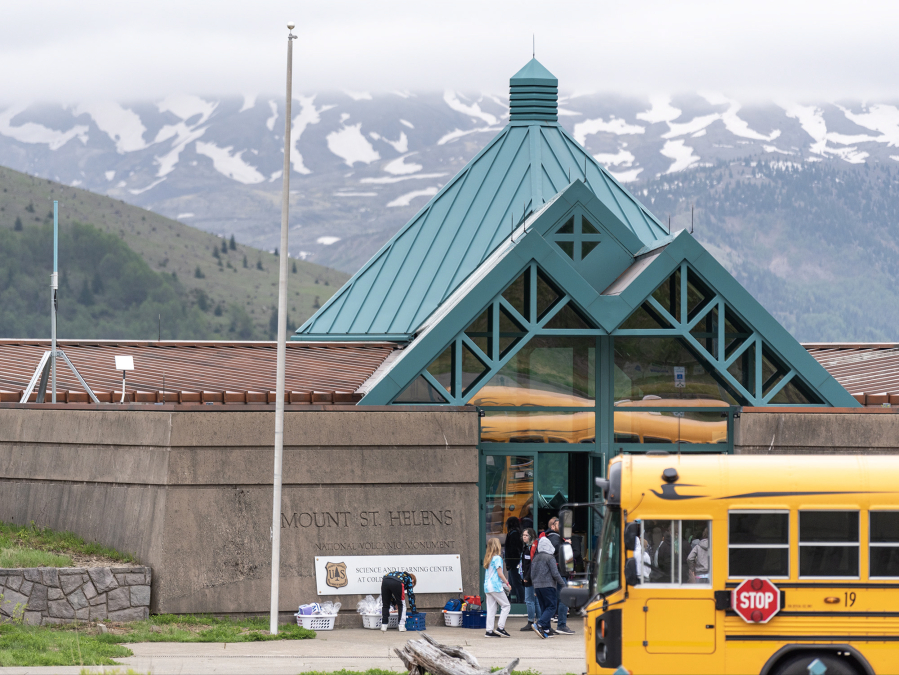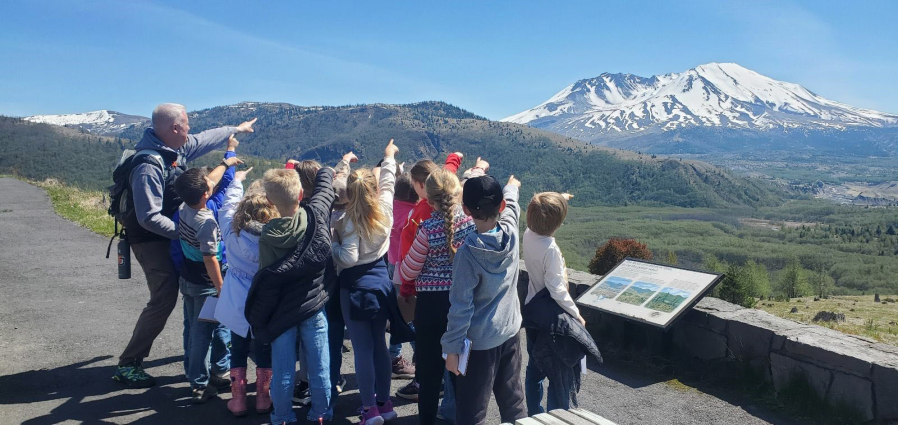Since 1996, scientists, researchers, staff and volunteers at Mount St. Helens Institute have been working to educate students and visitors about the mountain’s unique volcanic landscape. Despite recent staffing and budget cuts at the U.S. Forest Service, which oversees management and operations of the national monument, the institute remains committed to providing educational resources to visitors.
“We’re really focusing on making sure that we’re continuing to bring high-quality programming to youth with our science education programs, to visitors to the Mount St. Helens National Volcanic Monument with our guided adventures, and that our volunteers are well-trained and able to support visitors while they’re visiting the monument,” said Alyssa Hoyt, co-executive director for the institute.
Sunday marked the 45th anniversary of Mount St. Helens’ last major eruption, the most devastating volcanic eruption in U.S. history. The eruption took the lives of an estimated 57 people, flattened hundreds of square miles of forest and caused $1 billion in damage (equivalent to about $3.5 billion today).
The staff at Mount St. Helens Institute are working to educate visitors on what happened not just that day but also the days leading up to and following the 1980 eruption. Sarah Koppelman, director of development and community engagement for the institute, knows firsthand how transformative a visit to Mount St. Helens can be. Growing up in Kansas, she had never seen a volcano in person.
“I love nature, but I’ve never really had a close relationship with a place before. On a whim, I came out to Mount St. Helens for a summer internship 15 years ago and seeing this place completely blew my mind,” she said. “It hooked me and made me want to care about not only this landscape, but about the planet more generally. Mount St. Helens has such a unique and powerful story.”










